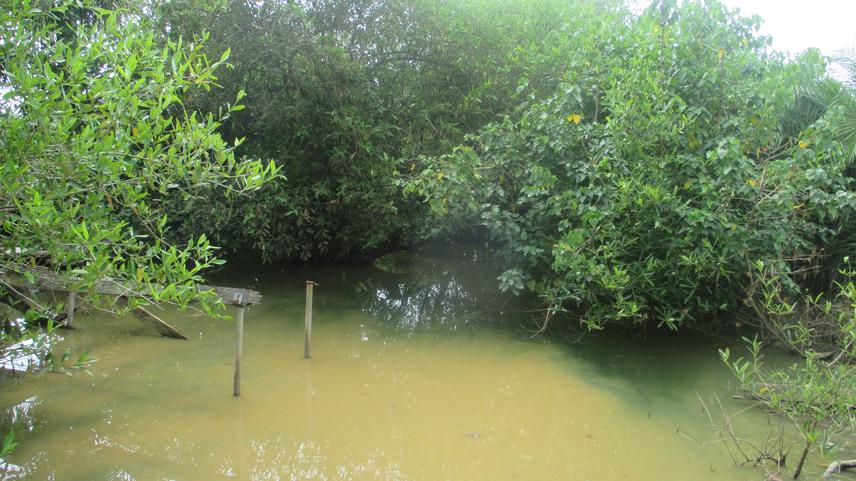Dickson Boateng
The main objective of this project is to support community-based mangrove conservation and judicious use of already degraded mangroves while taking steps to conserve and restore the mangrove resources, to safeguard the ecosystem. To achieve this broad objective, the project seeks to attain these specific objectives:
• Assess the extent of degradation of the mangrove ecosystem in the selected communities and prepare baseline-scenario data and information for the management of the sites.
• Provide education or capacity building activities/ training relevant for the conservation and restoration of the sites to the indigenes.
• Mobilize local institutions and reinforce chieftaincy and institutional framework at local, national and sub-regional levels for their effective participation and ownership of the project.
• Carry out site cleaning exercises and grassroot tree planting actions of predominant mangrove species (Rhizophora and Avicennia) and coastal species (Fegimanra Africana, Annona glabra, etc.) in degraded areas for replenishing lost mangrove woods.

Mangrove area after the project.
Anomabo, Egya, Abandze and Saltpond are prominent coastal communities in the Central Region of Ghana. Like many coastal communities, they are endowed with mangrove forests which provide ecosystem services. Over the years, the mangrove has served as a feeding and breeding grounds for reptiles, mammals and migratory birds. In addition, the mangrove has been a major source of income and protection for the communities against the high sea tides associated with climate change. Unfortunately, the mangrove resources in these communities are currently under serious threat. Much of the mangrove areas and the species they shelter have been negatively impacted due to anthropogenic activities such as housing, sand wining, felling of mangrove trees for fish smoking, salt production and pollution. As the highest sequester of carbon, their destructions not only challenge coastal livelihoods but also, present a hindrance to global climate change mitigation efforts. Therefore, there is the need to conserve mangroves to enjoy the ecosystem services they provide. This project seeks to promote the conservation and judicious use of the mangrove ecosystems along the coast of the communities and Ghana at large.
In doing so, GIS mapping and Remote Sensing analysis and complimentary socio- economic survey of mangrove communities will be done. GIS and Remote Sensing will be used in detecting encroachment at an early stage and assessing the spread. This method is chosen because it is capable of storing, managing and retrieving information. There will also be capacity building for stakeholders to own the project and create awareness to support biodiversity conservation actions. On-site exercises will be conducted to help restore the degraded mangrove areas. This community-based approach is chosen because it focuses on social, structural, and physical environmental inequities through active involvement of community members, organizational representatives, and researchers in all aspects of a project.
Following the successful implementation of this project, species of conservation importance in these mangrove areas will be conserved. Examples of such species are: birds including Actitis hypoleucos (common sandpiper), Butorides striatus (green-backed heron), Bubulcus ibis (cattle egret), Egretta gularis (reef heron), Aedea alba (great egret) and Egretta garzetta (little egret); halophytic plants like salt grass (Distichlis spicata), cordgrass (Spartina) and coconut trees (Cocos nucifera) and; Ostrea tulipa.